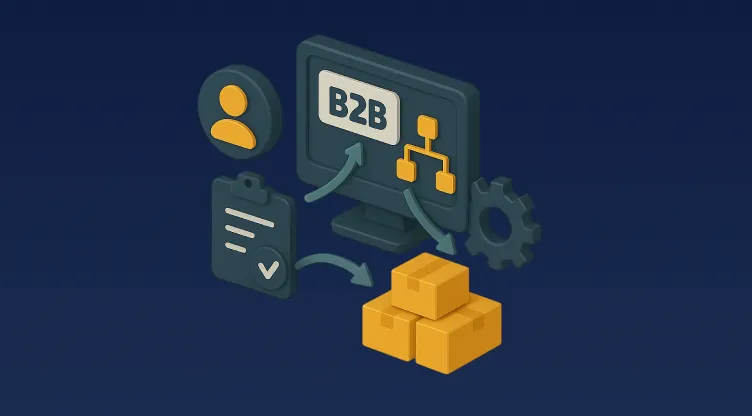Returns Management Fraud Prevention: Spotting Suspicious Patterns, Blacklisting Abusers, and Policy Enforcement

Table of Contents
Quick Clarity Corner: What You’ll Discover in This Guide
- Understand how returns abuse affects supply chains
- Explore common red flags in suspicious return behaviour
- Learn techniques for customer blacklisting and enforcement
- Discover policy-building tactics for fraud prevention
- See how returns automation tools like Omniful Returns Management help fight fraud
- Leverage data to optimise reverse logistics in MENA markets
The Hidden Cost of Generous Return Policies
Returns policies, once seen as competitive advantages, now double as potential threats. While they offer flexibility and assurance to loyal customers, they also open the door to abuse. Fraudulent returns aren’t just isolated incidents — they impact your entire supply chain.
In the MENA region, where cross-border eCommerce is booming and consumer expectations are evolving rapidly, returns fraud is becoming more common. Retailers face rising pressure to balance customer satisfaction with operational efficiency. That balance gets disrupted when returns fraud seeps in unnoticed.
Omniful’s Returns Management and Order Management System have emerged as robust defences in this battle — giving retailers tools to proactively combat abuse.
Understanding Returns Fraud: A Quiet Threat to Supply Chain Optimisation
Returns fraud occurs when customers deliberately misuse return policies to get refunds or exchanges for illegitimate reasons. While some cases are obvious — like returning used products — others are much harder to detect.
Fraudulent behaviours often target gaps in policy, technology, or logistics — especially within omnichannel environments where reverse logistics are harder to track manually.
This creates hidden inefficiencies that degrade your supply chain strategy. The ripple effects? Increased processing costs, inventory inaccuracies, and losses in revenue.
Some common types of returns abuse in MENA retail include:
- Wardrobing: Purchasing with the intent to return after limited use (common in fashion).
- Empty box scams: Returning a package without the actual item.
- Cross-border refund exploits: Abusing regional shipping delays or customs issues to claim fraudulent refunds.
- Serial returners: Customers habitually returning products while making minimal actual purchases.
Spotting Suspicious Patterns in Reverse Logistics
Early detection is your best shield against returns fraud. Businesses that embrace data analytics and AI for returns pattern recognition are more likely to stay ahead.
Here are some clear signals to monitor in your Inventory Management System:
- Excessive return frequency: Users who consistently return more than 50% of their orders.
- Returns of high-ticket items: Disproportionate return rates for expensive products.
- Mismatch between reason codes and inspection results: Frequent 'item damaged' claims that pass quality control checks.
- Returns initiated from specific regions or addresses: Clusters indicating coordinated fraud rings.
- Unusual shipping patterns: Returns shipped from different locations than original delivery addresses.
By integrating anomaly detection with your Warehouse Management System, businesses can create fraud detection workflows triggered by behaviour, not just frequency.
Blacklisting Repeat Offenders Without Compromising Loyalty
Not all high-frequency returners are fraudulent. Some are indecisive or face genuine issues. This is why context-driven blacklisting is essential.
Omniful’s Returns Management solution enables merchants to:
- Track customer return history across all sales channels
- Assign a trust score based on behaviour and past incidents
- Auto-flag accounts for review before approval of returns
- Block return requests from specific accounts while allowing order placement
- Customise enforcement by SKU, region, or value thresholds
This layered approach prevents alienating loyal shoppers while enforcing accountability among repeat abusers.
Enforcing Smart Returns Policies That Don’t Harm CX
A strict return policy may deter fraud, but it can also hurt customer experience. Retailers in MENA must walk a fine line between deterrence and service.
Best practices include:
- Tiered policies: Different return windows for high-risk vs. low-risk SKUs
- Mandatory item grading upon return: Inspecting and scoring returned goods
- Dynamic RMA approval: Only issuing Return Merchandise Authorisation for trusted customers
- Return shipping penalties for abuse: Charging fees for customers who breach policy terms
- Click-to-return dashboards: Empowering customers with a guided, transparent return process
By integrating your returns workflow with Shipping Gateway and Transportation Management System, you can streamline inspections, control costs, and still deliver a seamless experience.
Leveraging Automation to Enhance Fraud Detection
Returns processing needs to move faster than fraud. Manual reviews are too slow, especially for high-volume marketplaces and omnichannel retailers.
AI-driven platforms like Omniful support automation across the full reverse logistics lifecycle:
- Return triggers linked to SKU conditions
- Real-time return status updates via APIs
- Automated refunds post-inspection
- Blacklist automation tied to return flags
- Seamless integration with inventory rebalancing
When combined with predictive analytics, this data-driven approach also informs product design, inventory planning, and customer segmentation.
Case Example: Why Regional Strategy Matters in MENA
In Saudi Arabia, fast-growing D2C brands and hyperlocal delivery models are reshaping logistics. However, cultural nuances — such as expectations for cash-on-delivery or extended return windows — create loopholes.
A fragrance brand based in Riyadh noticed a surge in returns within hours of delivery. After reviewing pattern data via Omniful’s Order Management System, the team identified clusters of address-level abuse. They quickly implemented:
- Shortened return windows for select zip codes
- Manual review trigger for high-value returns
- Integration with Omniful’s Returns Management for faster blacklisting
As a result, return fraud dropped by 37% within two months — while customer satisfaction remained unaffected.
Why This Matters for Supply Chain Strategy
Fraud prevention is not just a customer service or finance issue. It’s a key part of supply chain optimisation. A leaky returns pipeline causes:
- Inaccurate stock levels in the Warehouse Management System
- Skewed demand forecasting in your Supply Chain.
- Delayed restocking of valuable items
- Extra labour costs for unnecessary inspections
An integrated fraud prevention layer makes your supply chain smarter, faster, and more resilient — especially in the MENA region where logistics costs can make or break growth plans.
Building a Return Fraud Defence Framework
Ready to take proactive steps? Here's a basic outline for developing your internal return fraud control system:
| Step | Description |
|---|---|
| Pattern Analysis | Use AI tools to identify suspicious behaviours. |
| Customer Scoring | Create return behaviour profiles for every shopper. |
| Workflow Automation | Trigger returns approval or blocks automatically. |
| Policy Clarity | Document and enforce rules clearly at checkout. |
| Integrated Tools | Leverage platforms like Omniful across OMS, WMS, and Returns. |
Once these components are in place, your fraud prevention becomes part of daily operations, not an afterthought.
Recommended Internal Tools for Streamlined Returns Management
To successfully prevent fraud while keeping logistics efficient, integrate the following:
- Omniful Returns Management
- Order Management System
- Inventory Management System
- Warehouse Management System
- Shipping Gateway
- Plug and Play Integrations
These modules allow you to automate processes, enhance visibility, and reduce operational costs — all while staying one step ahead of abusers.
Final Thoughts: Prevention Is Your Best Policy
Returns fraud is a growing concern, but not an unbeatable one. With the right mix of policy, technology, and customer intelligence, retailers in MENA can proactively defend against abuse while strengthening their overall supply chain strategy.
The ultimate goal is not just to stop fraud. It’s to protect the integrity of your inventory, the profitability of your logistics, and the trust of your genuine customers.
Frequently Asked Questions
How common is returns fraud in MENA eCommerce?
Returns fraud is increasing, particularly in cash-on-delivery markets and cross-border logistics scenarios where policy enforcement is harder.
Can Omniful help detect and stop return fraud?
Yes. Omniful provides tools like customer blacklisting, behaviour-based flagging, automated RMAs, and reverse logistics tracking.
What’s the best policy to reduce returns abuse?
A tiered approach with shorter return windows, mandatory inspections, and enforcement rules based on behaviour data works best.
What role does reverse logistics play in this?
Reverse logistics is the backbone of returns fraud detection. The faster and more transparent it is, the easier it is to stop abuse early.
How do I integrate fraud prevention with my supply chain systems?
Use a platform like Omniful that offers unified OMS, WMS, and Returns modules with plug-and-play integration and full visibility.























